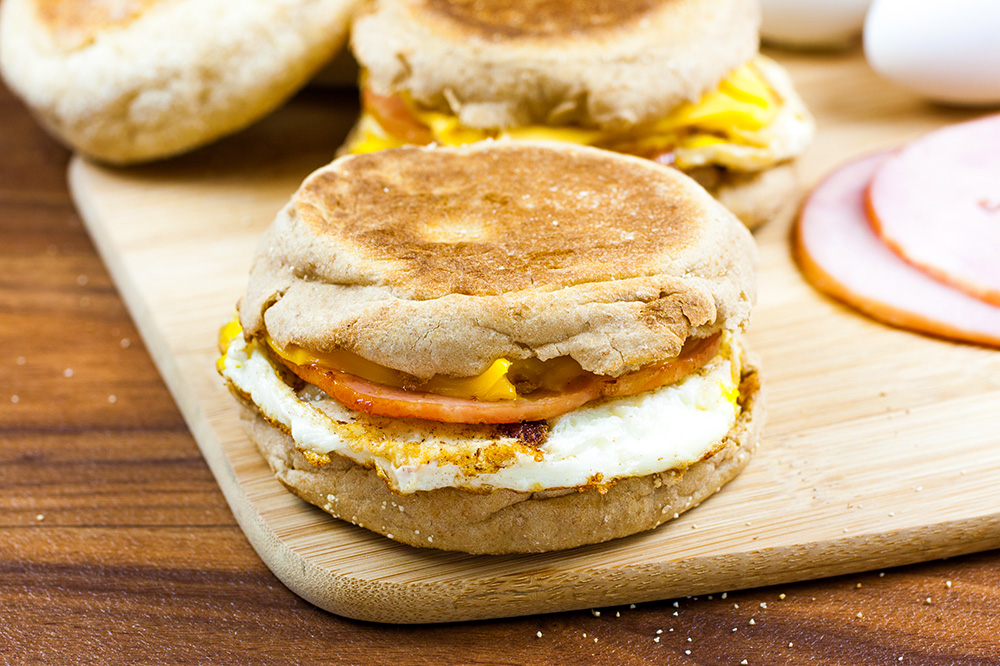Mid-October marked the nationwide roll-out of an all-day breakfast menu for McDonald’s franchises, and the industry has been positively buzzing over the move ever since. While some outlets, like Sonic, are questioning the value of all-day breakfast profits, we’re also seeing individual Burger King franchises go rogue from the national brand and offer all-day breakfast to compete. Regardless of competitors’ reactions, fans of breakfast food everywhere are rejoicing.
It’s predicted that extending their breakfast menu to all-day will add about 1 percent on average in franchise-wide sales over the next 12 months. When you consider the scale of the McDonald’s franchise system, that’s a considerable amount of profit for simply extending an already established menu. There are no new ingredients to learn, store, or procure. It’s simply a matter of operational change.
However, the expansion of the McDonald’s breakfast menu hasn’t been without hiccups. Luckily, this provides some quality lessons for restaurateurs looking to make a similar change.
When taking a new menu approach, there are three key operational takeaways that could make the difference between success and having egg on your face: properly training your employees, minimizing flow-through disruption, and maintaining a consistent experience throughout.
What We’ve Learned from McDonald’s
Like any other menu change, it’s important to train your staff on new procedures, even if it seems like they should be obvious adaptations. McDonald’s took a fast track approach to the change, which reportedly caused a few customer service hiccups in meal delivery timing at many locations.
Their employees have specific set-up and take down procedures, like kitchen staff across all restaurant segments, and even just adjusting to running two parallel prep stations (or a blended one) is not as easy in execution as design. Communication through pre-shift meetings and written training documentation can help mitigate the stress of learning a new pattern, particularly for employees who spend most of their time completing repetitive tasks.
It was also important for McDonald’s to make room on their menu for the expanded service of all-day breakfast, and not just relative to production and storage capacity. Removing lower selling items from your menu will free up prep space to accommodate more highly-requested items, but consumers are also easily overwhelmed by “choice overload.”
More items on your menu slows order flow-through, as guests need longer to parse the menu board and select their meal choice. Like any quick serve or fast casual establishment, McDonald’s relies on fast turnaround to minimize wait and maximize profit, particularly during rush periods.
As a national brand, McDonald’s also has the additional hurdle of streamlining its breakfast offerings across franchises. Keeping a consistent menu in a quick serve environment is crucial to brand allegiance.
With multiple outlets offering different versions of all-day breakfast — some with biscuit sandwiches, some without — traveling consumers have been experiencing confusion, slowing down flow-through and individual store profits. They want consistent taste and quality on the same menu item, no matter which location they visit.
With the added pressure of multiple menus throughout the day, it’s easy to see how quality can slip on individual orders, and not just on the new additions. Your entire menu can be impacted if your kitchen staff isn’t carefully following written guidelines or recipes, especially since they’ll be working in newly configured or combined prep spaces.
Beyond the McMuffin
McDonald’s (and in fact, all quick serve restaurants) certainly don’t have the corner on those delicious morning offerings; the last decade has seen a virtual explosion of breakfast-centered restaurants across nearly every market segment, from fast casual to upscale.
Multiple location establishments like Eastman Egg Company, Cinnamon’s in Hawaii, eggtc in Kansas City, and Yolk in Chicago have joined traditional family restaurants like IHOP and Denny’s to feature breakfast items prominently, if not exclusively, on their menus.
So, why go all-in on breakfast if you don’t already? Well, breakfast has recently been understood as one of the most profitable menus restaurants can implement, with numbers of visits and dollars in sales rising year-over-year.
Consumer expectation has adjusted to accept higher priced items for morning meals, and even go out of their way to add on stops in their routine if they prefer to get their coffee and their breakfast sandwich, for example, from two different locations. Customers tend to be habitual about their breakfast choices, both in location and order, so expanding your breakfasts could mean gaining a stream of steady repeat customers.
The key to success here (no matter what kind of restaurant you own) is speed and convenience, as the average time consumers spend eating breakfast is 13 minutes. If you can accommodate the need for quick and easy service at the busiest time of the average guest’s day, they’ll keep coming back every day.
Just be sure to balance the additional cost of extending your hours — labor, food orders and storage, even utilities — against the projected profit.
Let’s say you’re already serving breakfast – why go all-day breakfast? For one, the numbers don’t lie. In a recent National Restaurant Association poll, seven out of ten consumers, across all age brackets, said they wished restaurants would serve breakfast all day long.
And while eggs have been at the center of a swirl of increasing restaurant costs this year, specialty coffee drinks and other traditional breakfast items have a high profit margin for most restaurateurs. They also can provide a new avenue of creative expression for your chef and their staff, allowing for a degree of versatility in their technique and your restaurant’s reputation.
3 Other Breakfast Trends to Consider
As breakfast menus become more prevalent, the opportunity for versatility increases — although so do expectations for new and innovative takes on classic dishes. Some trends are driven by necessity and others by shifts in cultural priority, with on-to-go breakfast items representing the most obvious confluence of the two.
The breakfast burrito is definitely the standout among newer offerings, with any combination of egg, sausage, bacon, cheese, and vegetables making appearances on menus across the country. And why not? They’re portable, consumers are already familiar with lesser, microwavable versions, and they make for nearly infinite customization — making them prime items to attract millennial diners and increase ticket size.
Consumers are also looking for healthy choices across the board but especially in breakfast, a menu segment perceived as being filled with less healthy options (fairly or not). The reputation for health risks associated with eggs and pork items like bacon, sausage, and ham varies widely from year to year, but it’s inspired a swath of dishes utilizing egg whites exclusively or turkey sausage substitutions.
Whole grain and gluten-free baked goods are also making frequent appearances on menus nationwide to meet consumer demand for foods that feel psychologically more comforting.
There’s also the inherent comfort food nature of breakfast items with ethnic inspirations, especially dishes that are either derived from or are actually of Mexican origin. Chorizo, huevos rancheros, and other dishes involving tortillas, salsa, and guacamole are making frequent appearances on family restaurant menus, with no end in sight to the interest.
The vibrant flavors in all of these ingredients bring something bright and interesting to the table, but the feelings that they conjure for consumers — either nostalgia or “wishful nostalgia” for the way mom used to make it — change breakfast from most important meal of the day to most memorable. And that kind of experience is exactly what keeps your guests coming back again and again.
Want to get some additional ideas for fantastic breakfast menu items? Explore our look at five twists on the classic brunch item:







